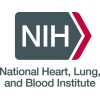
Predictors of Early Chest Infection in Acute Ischemic Stroke
Acute Ischemic StrokePneumoniaPneumonia is a frequent complication of acute stroke and is associated with increased mortality and long-term impairment in the affected subjects. In previous studies, a number of clinical (e.g., dysphagia, severe neurological impairment, mechanical ventilation), radiological (e.g., large infarctions in the territory of middle cerebral artery, insular infarction) and biochemical (e.g., increased serum levels of C-reactive protein, decreased levels of CD4+ T-lymphocytes) findings have been reported as risk factors of stroke-related chest infection. The present study (PRECAST) aims to identify a small set out of these previously described risk factors that can predict stroke-related pneumonia with high sensitivity and specificity.

The Effectiveness and Safety of Butylphthalide Soft Capsules in Secondary Prevention of Ischemic...
StrokeTransient Ischemic AttackThe purpose of the study is to evaluate the efficacy and safety of Butylphthalide Soft Capsules (En Bi Pu, NBP) in Secondary Prevention of Ischemic Stroke

Intravenous Ancrod for the Treatment of Acute Ischemic Stroke Within 6 Hours After Onset of Symptoms...
Brain InfarctionCerebral Ischemia1 moreTreatment of acute stroke is still difficult and the only specific drug approved (rtPA) can only be administered if treatment starts within 3 hours after onset of symptoms. This results in a still too small number of patients treated with rtPA ( < 15% in best clinical care institutions ). Ancrod is a differently acting biological drug which has been used for a long time but not for acute stroke treatment. STAT was the first RCT of medium size to show a significant benefit/risk ration if treatment starts within 3 hours. ESTAT was designed closely related to STAT but with a longer 6 hours window and specifically extended inclusion/exclusion criteria to avoid secondary complications possibly related to a longer time window.

The Effect of Ischaemic-reperfusion on the Endogenous Fibrinolysis in Man
Ischaemic Heart DiseasesHeart attacks are usually caused by a blood clot blocking an artery supplying blood to the heart. Current treatments are designed at relieving this blockage as quickly as possible to minimise damage to the heart muscle. However in restoring the supply of blood local damage known as "ischaemia-reperfusion injury" may occur. The aim of this study is to assess how clot forming and clot dissolving pathways are affected during this process, and examine the role of a natural inflammatory hormone, bradykinin. This will help us to understand the mechanism by which ischaemia-reperfusion injury may occur and to devise new treatments for heart attacks.

National Heart, Lung, and Blood Institute Twin Study
Cardiovascular DiseasesHeart Diseases6 moreTo assess genetic effects on the variation of cardiovascular and pulmonary risk factors in a cohort of 514 pairs of white male veteran twins.

Implementation of Ischemic Heart Disease Clinical Practice Guidelines
Ischemic Heart DiseaseThe purpose of this study is to design and evaluate targeted implementation strategies to fully integrate the VHA clinical practice guidelines for ischemic heart disease into VHA clinical practice. Effectively implementing the guideline will enhance the quality, appropriateness, timeliness, and cost effectiveness of care delivered to veterans with ischemic heart disease.

Salvage of Myocardial Infarction Documented by MRI in Patients Undergoing Rescue Percutaneous Coronary...
Myocardial InfarctionMyocardial IschemiaAtherosclerotic disease is responsible for one third of all deaths annually and is a major cause of comorbidities. While atherosclerosis is by itself a benign disease, it often leads to complications such as acute myocardial infarction with ST-segment elevation. Rescue angioplasty is indicated if thrombolytic therapy fails. However, the benefits in reducing mortality and the amount of myocardium effectively saved are not well established. The development of new tools, including cardiac magnetic resonance imaging to identify myocardial area at risk and infarcted increased diagnostic accuracy. However, unlike the context of primary angioplasty, little is known about the relation between coronary epicardial and microvascular flow after rescue angioplasty and myocardial salvage. The objective of this study is to evaluate whether there is a relation between these flows and myocardial salvage identified by Magnetic Resonance Imaging (MRI). At the end of this research, the investigators hope to contribute to a better understanding of coronary flow and its relation to the amount of heart muscle saved after rescue angioplasty. This is an important information that can help understand which cases benefit most from rescue angioplasty.

Registry for Evaluating Outcome of Acute Ischemic Stroke Patients Treated With Mechanical Thrombectomy....
Ischemic StrokeThe Bernese-European RegistrY for ischemic stroke patients treated Outside current guidelines with Neurothrombectomy Devices using the SOLITAIRE™ FR With the Intention For Thrombectomy (BEYOND-SWIFT) is a retrospective, multi-center, non-randomized observational study aims to investigate the safety and efficacy of a Medtronic market-released neurothrombectomy device (applied as initial devices used for intervention) in acute ischemic stroke patients who do not fulfill treatment eligibility according to current guidelines. Patients will be treated or were treated at the discretion of the investigator, independent of participation in this registry. Primary Analysis is the Impact of successful reperfusion on functional outcome at day 90 in patients presenting with large infarct cores (ASPECTS<6) or minor symptoms (NIHSS<8).

Dexmedetomidine Effect on Mitochondrial Function
Complication of AnesthesiaIschaemia-reperfusion InjuryThe investigators hypothesize that in addition to a known sympatholytic effect, intraoperative dexmedetomidine reduces adverse changes in mitochondrial function and structure attenuating ischaemia-reperfusion and end-organ injury for children with non cyanotic congenital heart defects having corrective heart surgery.

Rivaroxaban Acute Stroke Safety Study
Acute Ischemic StrokeTransient Ischemic AttackAtrial fibrillation is a common cardiac arrhythmia and a major risk for ischemic stroke. Furthermore the risk of stroke is higher in the first month after transient ischemic attack (TIA)/stroke. Rivaroxaban has been approved by Health Canada over period of last two years for prevention of stroke and have been found equally effective as oral Vitamin K antagonist. The foremost benefits of NOAC are reduced intracranial bleeding risk and does not require coagulation monitoring. Optimal timing of anticoagulation after TIA/stroke in patients with known non-valvular atrial fibrillation is not known. The practice is variable and opinion based. The bias for many stroke physicians and neurologists is to start later (after 1-2weeks) to prevent hemorrhagic transformation thus possibly exposing the patients to an increased risk of recurrence. The product monograph for the drug suggest to wait for variable of 3 to 14 days before starting the NOAC (Waiting period:14 days for dabigatran and rivaroxaban, 7 days for Apixaban after ischemic stroke and three days after TIA for rivaroxaban). The times have been chosen arbitrary. The investigators aim to study incidence of symptomatic hemorrhage in patients with non-valvular atrial fibrillation who are initiated with new oral anticoagulants early after TIA and stroke.
